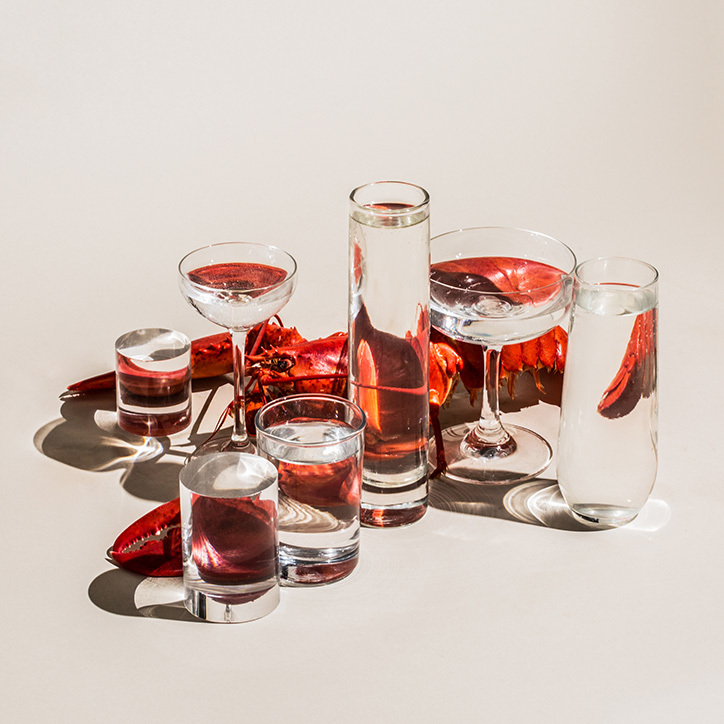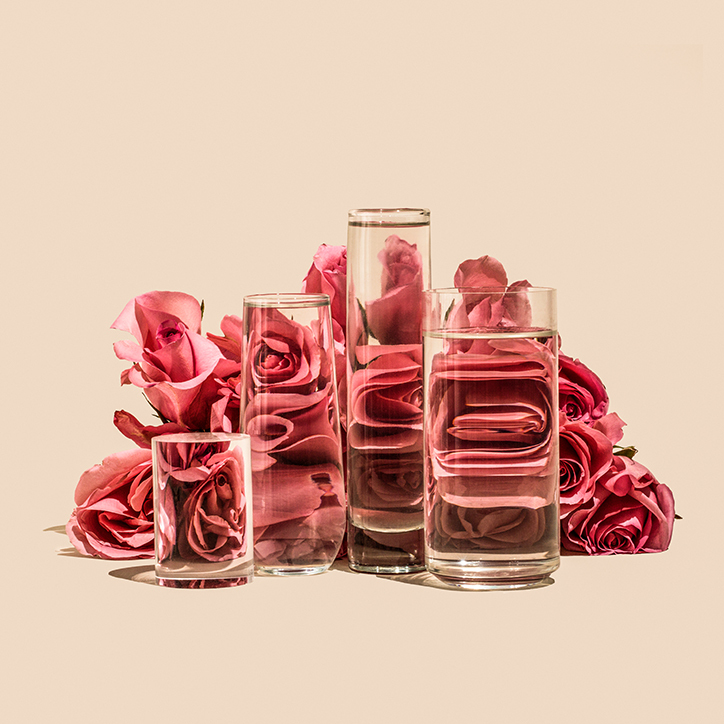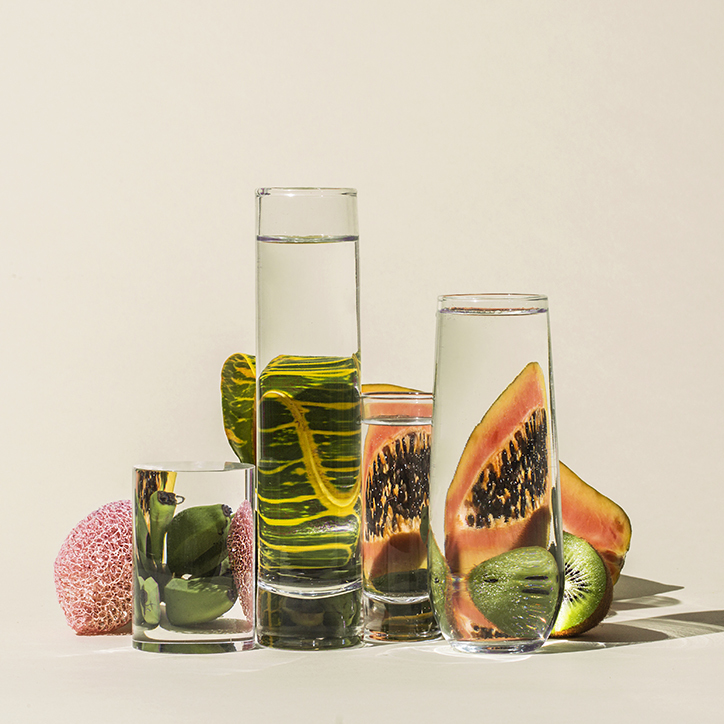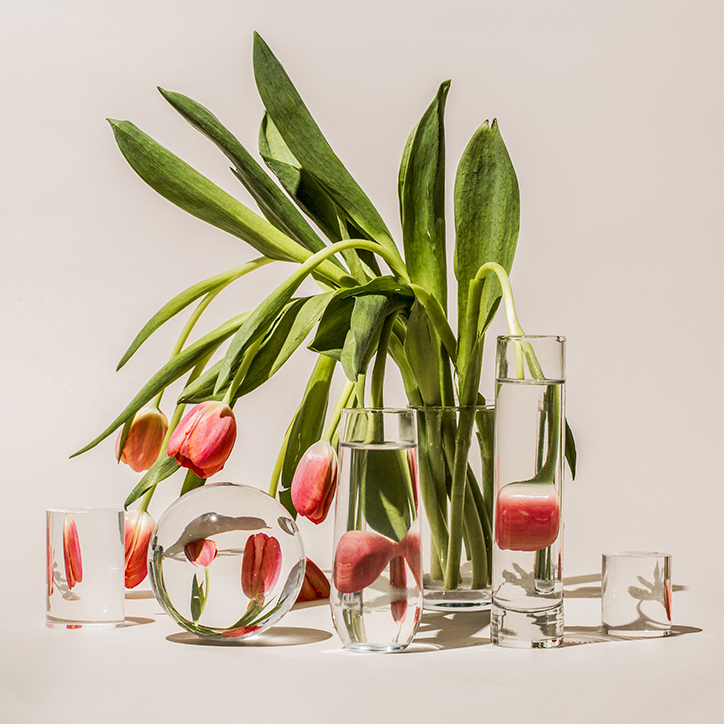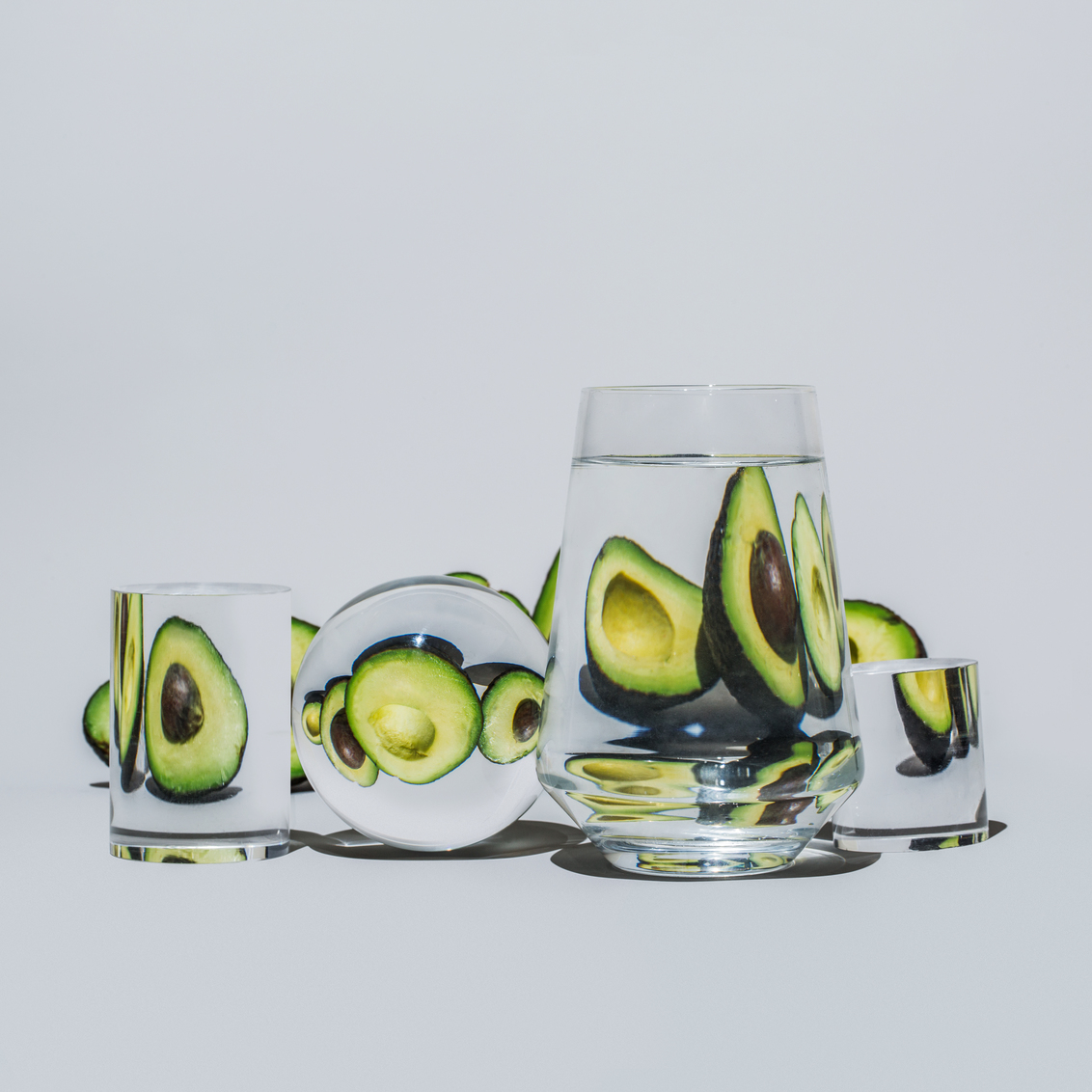Photographer Suzanne Saroff began working in her discipline the way most do, developing a love for it through picking up disposable cameras and point and shoots. Hooked, the Missoula-born and now New York-based photographer “endeavoured to learn as much as possible about the art, teaching myself aspects of DSLR cameras and learning lighting techniques while exploring composition and subject matter,” she tells us. Since then, composition has become a part of Suzanne’s work she’s garnered a following for, arranging glasses filled with water to alter perceptions of a well-known object, from a lobster to half a papaya, or a bunch of peonies. Suzanne initially moved to New York to work as a photo art director at a branding agency but took the freelance leap this year, resulting in “an exciting year of growth both with my personal art as well as my client work”. Part of the many reasons for Suzanne’s growing success could be her ability to alter and change the way viewers of her work interact with everyday objects. It’s a process that is part of her “creative motivation”, looking to explore “new ways of looking at the every day, seeking to find a balance of sleek and whimsical and aspiring to create intriguing abstractions that tell stories and refresh one’s perceptions of the subjects,” she tells us.
The photographer creates the abstractions using two tools at her disposal. The first is a still life object that could be found lying around the house or in any supermarket. These items are then coupled with an arrangement of glasses, tall and short, fat and round, filled with different amounts of water to warp the shape of the original item, protruding in parts and minimising in others. “Within my compositions, it’s essential that there is feeling, emotion” the photographer explains, “and that they capture an energy that transcends the frame.” Other than her arrangement of items, the use of lighting is key to Suzanne’s practice in order to “emphasise the details, to create a mood and to further the emotional feeling within a piece,” she points out. It’s also an area of her practice Suzanne feels excited to learn more about, looking to “develop and push my lighting styles”.
